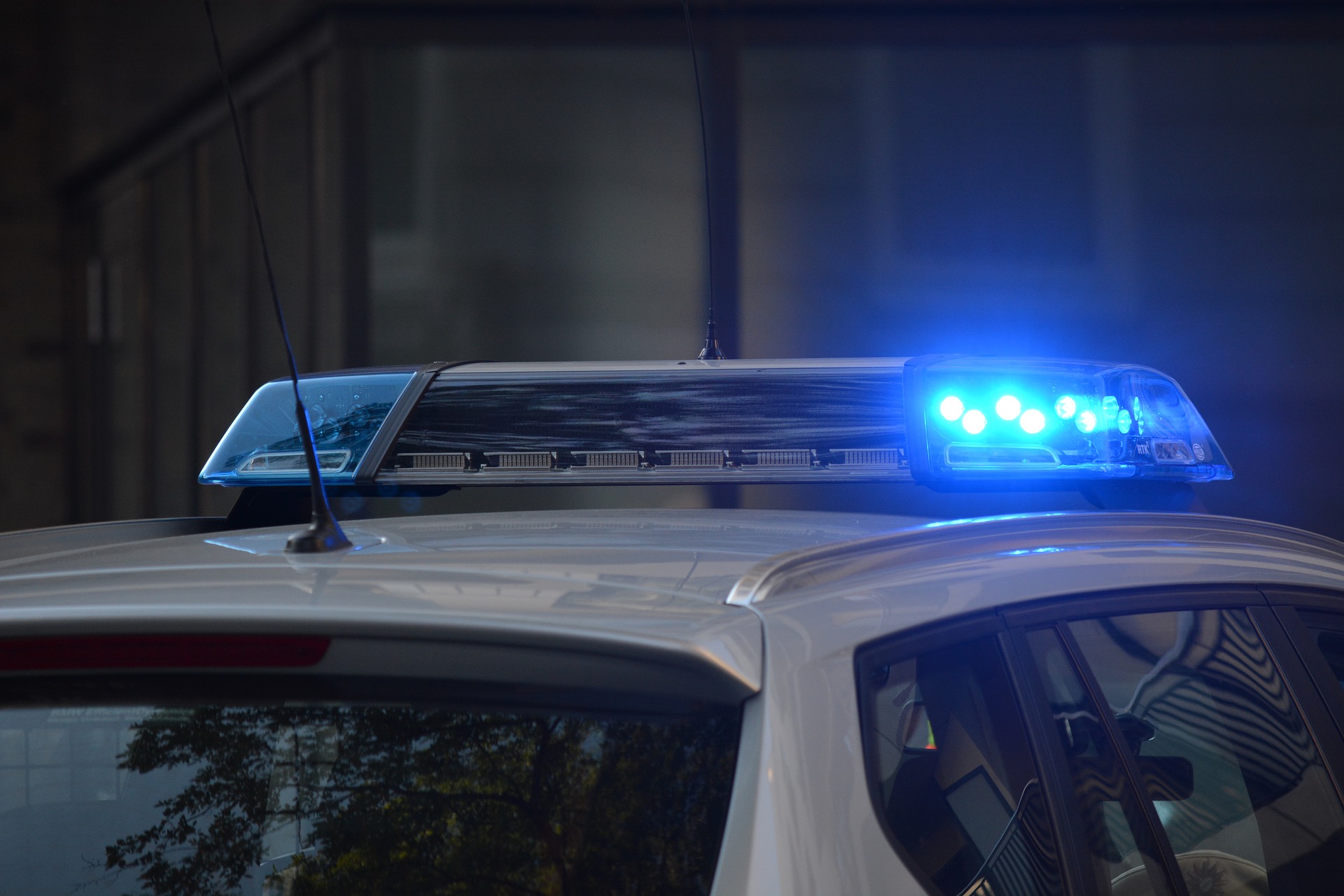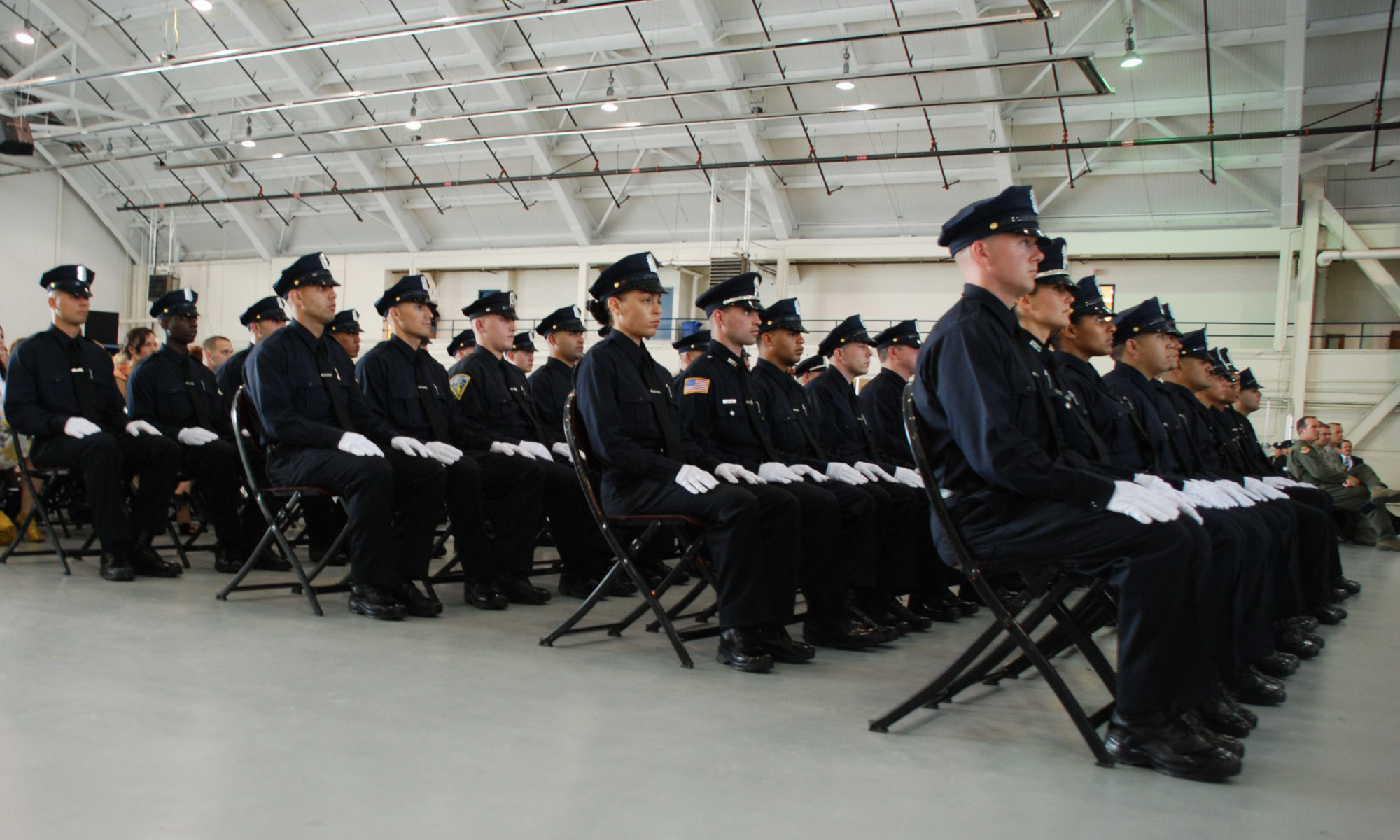According to the International Association of Chiefs of Police, the general job description of a police patrol officer is to enforce laws and ordinances, for the protection of life and property in their assigned area. Police officers receive assignments for the protection of a particular area, conducting investigations, and apprehending criminals.
Before police academies were developed in the United States in the early 20th century, a police officer’s training took place on the streets. Aside from following the law, police learned primarily by trial and error from the different encounters they came across. Now, every police officer in the nation goes through a formalized certification course at a police academy.
Each year, an average of 45,000 entry-level officer recruits enter basic training programs at 664 state and local law enforcement training academies. Of the 45,000 recruits, eighty-six percent of the recruits successfully completed their training.
Enrollment Requirements
The U.S. Bureau of Labor Statistics states that police academy applicants usually need a high school diploma or its equivalent (www.bls.gov). In some cases, at least some college coursework or a degree is necessary. Additional qualifications may include a valid driver’s license, a clean criminal record and a physical fitness report from a doctor. Some academies also require completion of a hearing test and a psychological evaluation.
Education
Students can begin preparing for the police academy while in high school. Electives such as criminology, legal studies, physical education, sociology and psychology are helpful for aspiring police officers. In addition, police academy admissions officers may look for applicants who have completed college coursework in criminal justice or law enforcement. Some academies prefer candidates who hold an associate’s or bachelor’s degree in one of those fields.
Program Requirements
After gaining acceptance into the police academy, recruits participate in classroom and practical instruction. They learn state laws, criminal investigations, patrol procedures, firearms training, traffic control, defensive driving, self-defense, first aid and computer skills. Police academy recruits also undertake physical training and fieldwork that demonstrates their comprehension of classroom instruction. Field exercises include investigating mock criminal scenes, directing traffic, operating police vehicles, arrest techniques, using firearms, fingerprinting and interrogation methods. Police academy training usually takes 22-27 weeks to complete.
Where are new police officers being trained?
From 2011 to 2013, nearly half (47%) of the academies that provided basic training for new recruits were based at an educational institution such as a 2-year college (33%), 4-year college or university (7%), or technical school (7%). Municipal police departments operated 20% of academies, sheriffs’ offices operated 10%, and state police or highway patrol agencies operated 6%. State Peace Officer Standards and Training (POST) agencies, which typically certify peace officers, operated 5% of academies.
Nearly all (96%) state and local law enforcement training academies used a class structure for basic training (groups of recruits being trained at the same time). From 2011 to 2013, academies held a median of six training classes, or two classes per year. The median smallest class size was 14 recruits and the median largest class size was 28 recruits. Overall, there was a large range of class sizes. Some academies had classes with 1 graduate and others had classes with more than 1,000 graduates.
What type of training model did they use? Stress vs Non-Stress
Stress-based training is based on the military model and typically involves intensive physical demands and psychological pressure. About half (48%) of recruits were trained by academies using a training model that was more stress than non-stress oriented in its approach.
Non-stress training model emphasizes academic achievement, physical training, and a more relaxed and supportive instructor–trainee relationship. About a fifth (18%) of recruits were trained by academies that maintained more of a non-stress environment.
A third (34%) of recruits were trained in academies that balanced the two approaches.
Who are they training?
A total of 488 (73%) academies provided data on the sex of 91,000 recruits entering basic training programs from 2011 to 2013. Fifteen percent of these recruits were female, down slightly from the estimated 17% in 2005. During the same period, 336 (51%) academies provided data on race and Hispanic origin for 58,000 recruits entering basic training. As in 2005, 70% of these recruits were white, and 30% were members of a racial or ethnic minority. Blacks and Hispanics each accounted for 13% of recruits, and 4% were members of other races.
How long are they training?
Excluding field training, the average length of a basic law enforcement training program in a training academy was about 840 hours, or 21 weeks. This was about 2 weeks longer than was observed in the 2006 CLETA. Academies operated by agencies with special jurisdictions (such as natural resources, parks, or transportation systems) had the longest training programs (an average of 1,075 hours), followed by county police academies (1,029 hours). Academies operated by state POST agencies (650 hours), technical schools (703 hours), and sheriffs’ offices (706 hours) had the shortest training programs on average. Across all types of academies, each recruit spent an average of 806 hours each completing basic training (not shown).
What subject areas do police academies focus on during training?
Among the major topical training areas in the CLETA survey, the most required training hours were in the area of operations (more than 200 hours per recruit). Major topics covered in operations training included patrol procedures (52 hours), investigations (42 hours), emergency vehicle operations (38 hours), and report writing (25 hours).
An average of 168 hours per recruit were required for training on weapons, defensive tactics, and the use of force. Recruits spent most of this time on firearms (71 hours) and self-defense (60 hours) training. Recruits also spent an average of 21 hours on the use of force, which may have included training on agency policies, de-escalation tactics, and crisis intervention strategies.
Recruits were typically also required to take training classes in self-improvement (89 hours per recruit) and legal education (86 hours). On average, more than half of self-improvement training hours were related to health and fitness (49 hours). A majority of the legal training focused on criminal and constitutional law (53 hours) and traffic law (23 hours). Nearly a third (29%) of academies required basic foreign language training with an average of 9 hours per recruit.
Firearms Training
Between 2006 and 2013, the average amount of instruction required per recruit increased the most for firearms skills, from 63 hours in 2006 to 71 hours in 2013.
About 9 in 10 recruits received training on the use of firearms under night-time or reduced-light conditions (93%) or simulated stressful conditions (89%). Most recruits also received firearms training under nonlethal live fire (75%) and in computerized firearms training systems (64%).
Nearly all recruits received training on weapon retention (99%), verbal command presence (99%), and ground fighting (94%). Most of recruits were also trained on pressure-point control (85%) and speed cuffing (77%).
Reality-Based Scenario Training
Nearly all recruits (99%) were trained at academies that incorporated reality-based (mock) scenarios into their use-of-force training. Such training allows recruits to practice critical decision making, execute standard operating procedures, and employ potentially life-preserving tactics under the duress of realistic conditions. About 9 in 10 recruits received reality-based training on arrest control tactics (91%), verbal tactics (88%), and self-defense (87%), and about 8 in 10 received this type of training on the use of firearms (80%) and the use-of-force continuum (77%). More than 7 in 10 recruits (74%) received reality-based training on the use of nonlethal weapons.
All high-stress (defined as all or mostly stress) academies and nearly all low-stress (defined as all or mostly nonstress) academies (94%) used one or more types of reality-based scenario training. On average, high-stress academies used this type of training for eight of the nine training areas identified in the 2013 CLETA survey instrument, compared to an average of six areas for the low-stress academies. A higher percentage of high-stress academies than low-stress academies used each type of reality-based training. The difference was greatest for threat assessment (65% compared to 41%), nonlethal weapons (87% compared to 63%), and firearms training simulators (71% compared to 50%).
Community Policing Training
Community policing continued to be an important component of basic law enforcement training in 2013. Academies required an average of more than 40 hours of community policing training. Nearly all (97%) of academies (which trained 98% of recruits) provided training in this area, up from the 92% observed in 2006. In 2013, recruits were required to complete an average of more than 40 hours of training in community policing.
A majority received training on how to identify community problems (77%), the history of community-oriented policing (75%), interacting with youth (62%), using problem-solving models (61%), environmental causes of crime (57%), and prioritizing crime and disorder problems (51%).
Social Issues Training
Nearly all basic training programs addressed social issues such as domestic violence and mental illness. More than 90% of academies included training on domestic violence (an average of 13 hours per recruit), mental illness (10 hours), and sexual assault (6 hours). More than 80% provided training on domestic preparedness and terrorism (9 hours), crimes against children (6 hours), victim response (5 hours), and gangs (4 hours).
Terrorism-Related Training
In 2013, 95% of academies (which trained 95% of recruits) provided basic training on terrorism-related topics, an increase from 2006 (90%). A majority of recruits received training on the National Incident Management System/ Incident Command System (78%); understanding the nature of terrorism (69%); response to weapons of mass destruction (68%); relevant federal, state, and local agencies (60%); disaster response and recovery (56%); and intelligence gathering (53%).
How are new police recruits tested?
Academies used a variety of tests to evaluate recruits. Nearly all academies evaluated recruits with written tests (95%) and skills proficiency tests (93%), and they administered a median of 16 written tests and 5 skills proficiency tests to each recruit (table 14).
Eighty-eight percent of academies used physical fitness tests with a median of three tests, and 76% used scenario-based tests with a median of seven tests. Competency exams constructed by a state POST commission or other state level agency were used by 70% of academies.
Field Training Component
More than a third of academies included a mandatory field training component in their basic program. Overall, 37% of academies (which trained 31% of all recruits) required recruits to complete a mandatory field segment after graduating from the basic academy training program. Field training provides recruits with the opportunity to work with a field training officer in order to learn the practical aspects of law enforcement and community service, and to assimilate into the professional culture of a particular agency. More than two thirds of state police or highway patrol (76%), county police (76%), municipal police (71%), and special jurisdiction (69%) academies had a field training requirement.
An additional 44% of academies (which trained 45% of all recruits) reported that there was a field training requirement, but the hiring agency oversaw it. When agency-specific requirements were included, there was a field training requirement for recruits at all county police and special jurisdiction academies and at nearly all municipal police (97%), multiagency or regional (96%), state police or highway patrol (94%), and sheriff ’s office (90%) academies.
Among academies that oversaw a mandatory field training component, the average program was about 500 hours. Municipal police academies (630 hours) had the longest field training programs on average.

